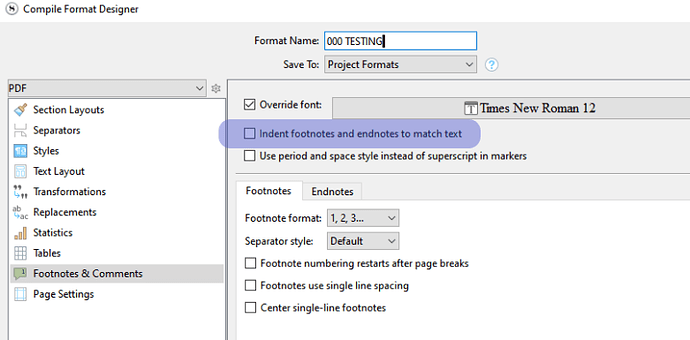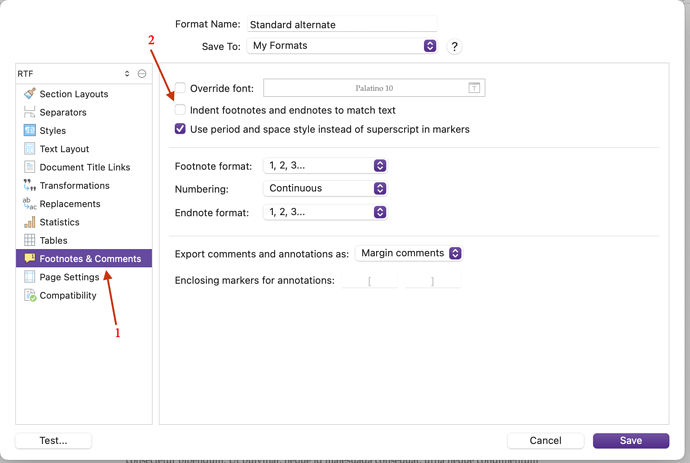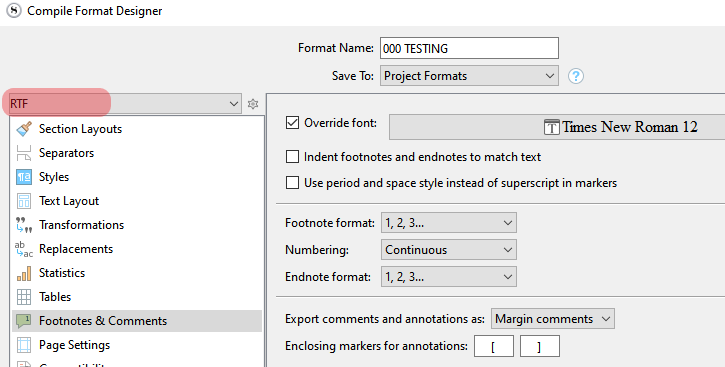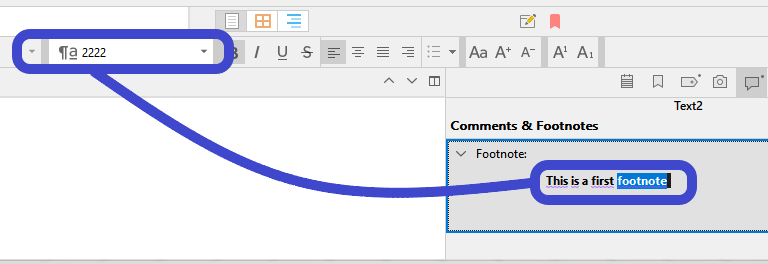Many things I don’t quite understand here…
1- Why two footnotes in the same place ? Why not make it a two paragraph footnote ?
(As I said earlier, I’ve never seen it for as much as I can remember. But I read novels; technical books, I wouldn’t really know.)
2- Why would someone want them so consecutive that instead of rendering as 1 and 2, the reference numbers would compile as 12 ? (I’ve shown that it is actually easy to insert a symbol (superscript &, or -) or a space in-between, giving them at least some clarity. – Which at the same time fixes the issue of having them merged by Scrivener.)
→ It works with a comma too, btw:

You just need to use the built-in footnote marker x2 (see up the thread), and superscript whatever you put in-between them.
3- Applying a style to a footnote actually works for the character attributes. (Again, I just don’t get why someone would want the footnotes to indent differently than either the body text, or not at all…)
But I guess that if one really really wants them to indent their own way, it’d be possible to use non-break spaces. You’d just need to know how many from a footnote to the next, so it is consistent throughout the book. (Assuming the footnotes are short, else, if it they require more than a single line, I’d say someone is looking for trouble. – And nothing to be done with the positioning of the footnote ID…)
Other than:

(I personally wouldn’t even use that option to center short footnotes… – Looks amateurish imo.)
[EDIT] OK, my bad, although applying a style looked like it worked (my 3rd point), I was actually fooled by the override font option of my compile format.
But… one might as well use that to get the font he/she wants then. I doubt someone will want the footnote’s font to change from a footnote to the next anyway…


And as far as the “special” indenting goes: the way I see it, footnotes are not supposed to be visually appealing. They are merely side informations. A supplement. A complement. But not the point of focus.
If you really insist on customizing your footnotes: Use styles all over the body text, set the formatting of your compile format to be the way you want your footnotes to be formatted, uncheck override font for the footnotes, and, finally, expect no approval whatsoever from LL staff. 
(Although this would work, I am only joking here. Saying just in case.)






